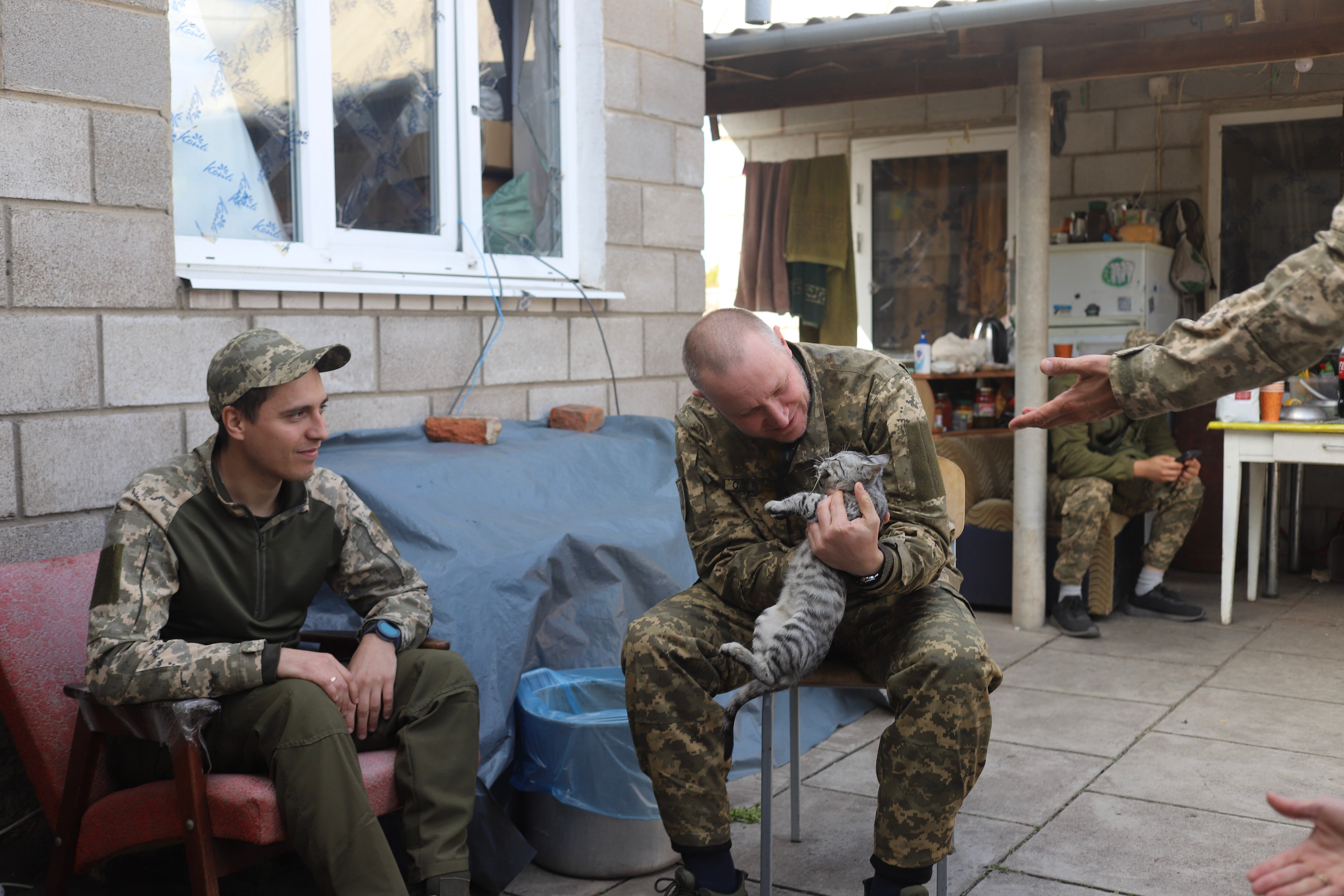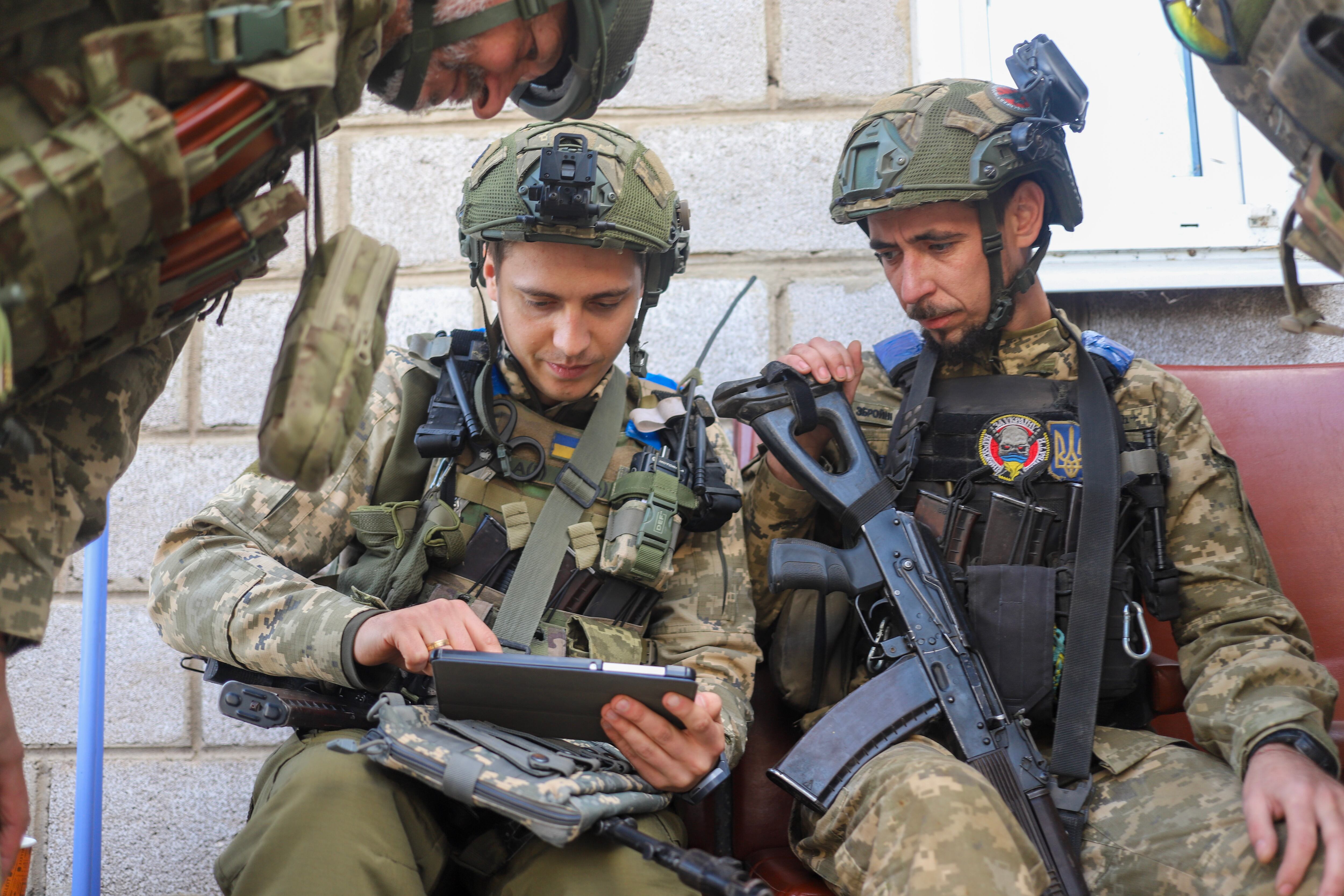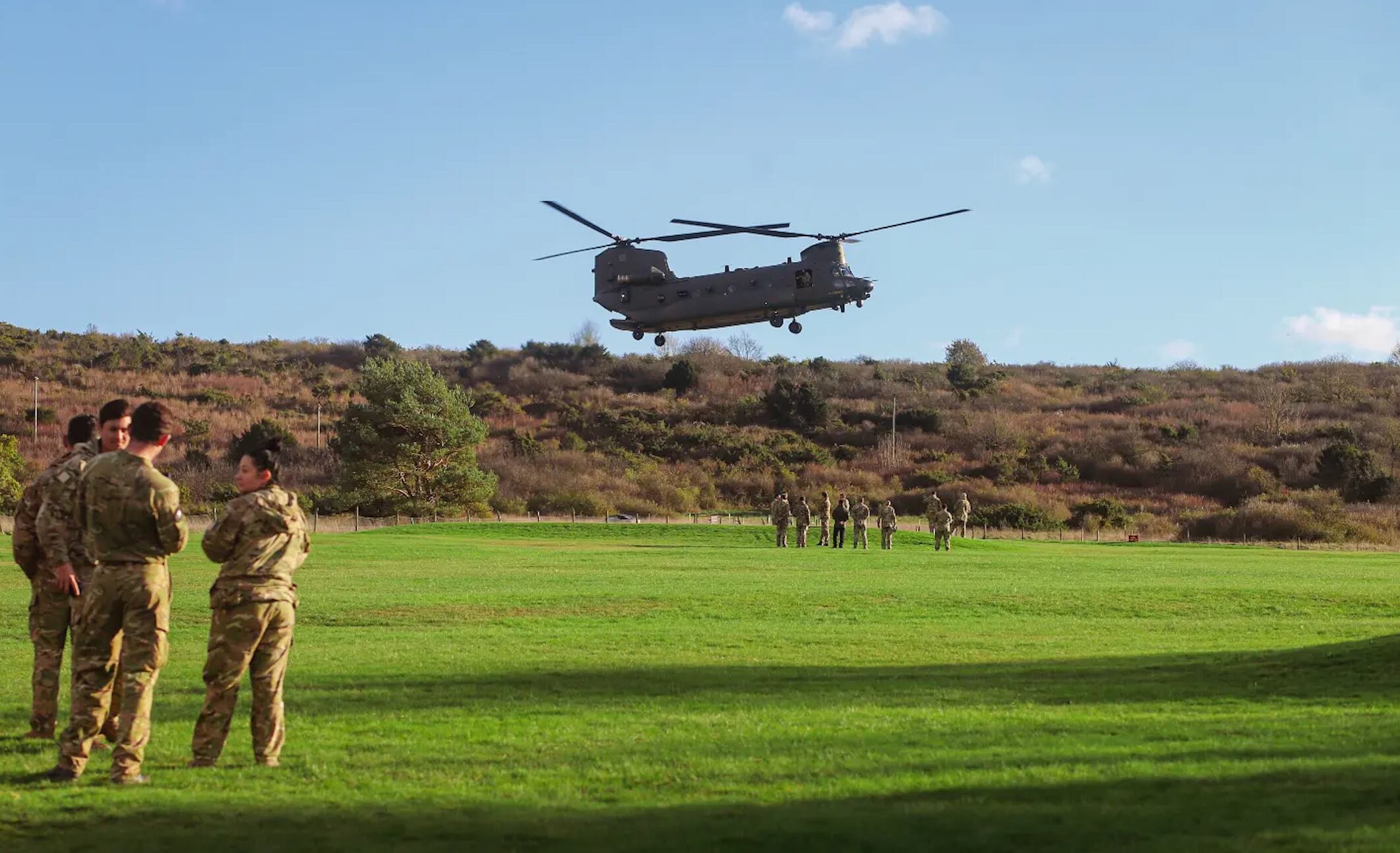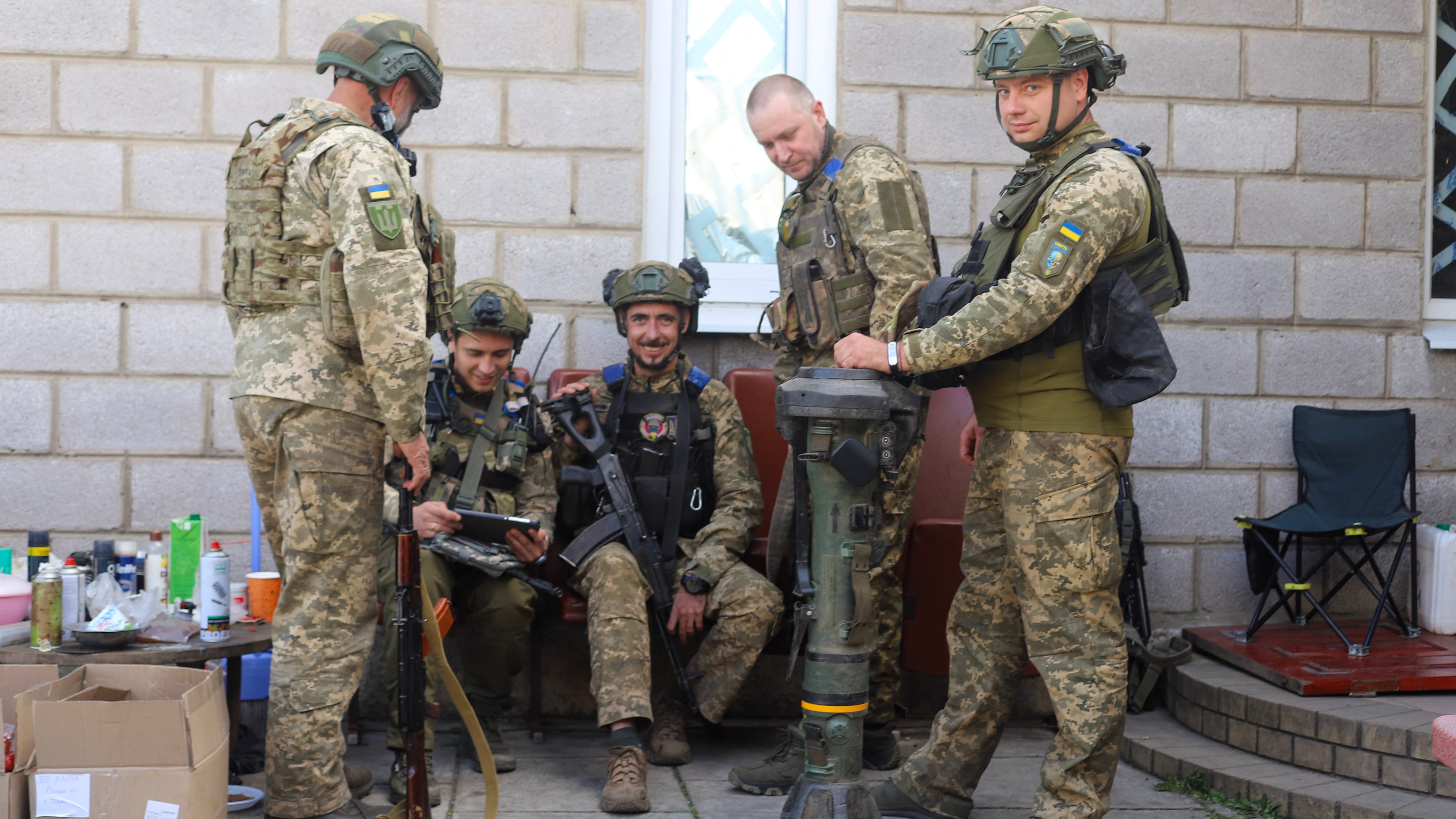VELYKA NOVOSILKA, UKRAINE — Relief for Ukraine’s exhausted and outgunned fighters is now arriving after Congress passed a foreign aid package that included $61 billion to support Ukraine’s war effort — and it is having immediate effects in repelling Russian advances.
Russia has made slow and steady gains after a failed Ukrainian counteroffensive last summer. Another front was recently opened by Russian troops in the Kharkiv region, where pressure is mounting on already overextended Ukrainian brigades.
With the aid, 155mm artillery ammunition is heading straight to the front, where Ukraine’s guns — also buffered by a Czech initiative to purchase artillery shells — continue to fire in the face of a Russian offensive. Also included in the aid are HIMARs munitions and long-awaited ATACMS missiles to improve Ukraine’s long-range strikes, which have proven capable of hitting Russian logistics and troop concentrations deep within occupied territories.
Finally, fresh stocks of air defense munitions — notably, interceptors for Ukraine’s Patriot systems — will help stifle Russian missiles launched into Ukraine’s cities and civilian infrastructure.
“Give us the shells, and we can finish the jobs ourselves” is a refrain heard throughout the frontlines, where Ukrainian soldiers I met recently discussed the need for aid and its impact on morale.
At a dugout a few kilometers away from Russian positions, we watched as a Ukrainian artillery brigade repelled an assault on their trenches after being issued an influx of shells.
Still, most analysts agree the most recent aid package will simply buy Ukraine time, perhaps a year, to fix fundamental weaknesses.
Beyond weapons, Ukraine needs a long-term strategy to address a serious manpower deficit against the Kremlin’s seemingly endless supply of troops. And if it ever wants to attempt another offensive, a training overhaul will be a crucial component.

Those needs remain prominently on display near the town of Velyka Novosilka, where hardened, weary soldiers paused from the frontlines and discussions of war to play with “Stary,” a blue-eyed gray kitten the brigade rescued during operations in the nearby town Staromaiorske.
‘No idea what we are facing here’
Just months earlier, these same soldiers had fought like hell to pry the town, located in the Donetsk region, from Russian control. It’s now almost jarring to see them — muscular, bearded and battle-scarred — reduced to coos and smiles while watching Stary catch mice.
“Some in the West have no idea what we are facing here,” said Alexander, an officer with Ukraine’s 121st Territorial Brigade. “Comrades of ours were at NATO training in Germany, being taught how to operate tanks ahead of the counteroffensive. One soldier asked the instructor what to do if you encountered a minefield. ‘Oh, you just drive around it.’”
This anecdote quickly became a running joke among soldiers on the frontline, where, just weeks later, Ukrainians on what would be a failed offensive encountered minefields hundreds of kilometers wide, with as many as five devices per square meter.
Now, with the influx of U.S. aid, Ukrainian and Western planners are looking to training methods that will avoid the mistakes of 2023.
One key concern raised by Ukrainians and their partners has been that Western troops cut their teeth in environments, such as Iraq or Afghanistan, where they had a significant technological advantage and total air superiority.

When visiting a training base in southern England in 2022, one trainer, a New Zealand army officer, warned me that the training might not be adequate to meet Ukraine’s needs.
“Quite frankly, we’ve never fought this kind of war before,” he said, adding that their team’s experience had come almost entirely in Afghanistan.
Still, trainers did their best to simulate the environment in Ukraine’s bloodier trenches.
“We try and give them something close to live fire,” the officer said. “They are practicing artillery on the light fire range … and we do fire maneuver ranges as well as battle simulation. We’ll have loud bangs that simulate artillery, we have exercises where we bring in amputees and dress them to make it look like that amputation was caused by artillery, and make the recruits responsible for treating that individual.”
This training, however, left out significant components of the fights Ukrainians routinely encounter. Several soldiers specifically raised concerns over the lack of drones during training — now ubiquitous on the battlefield — both for reconnaissance and assault purposes.
Others, like Yuriy, an officer with Ukraine’s 80th Air Assault Brigade, which has fought around the city of Bakhmut, praised the trainers while acknowledging a serious lack of time — compared to any Western military — afforded to master what was being taught.

“[Training in Germany] was … a change of environment, and all the instructors were very polite,” he said. “In all six days, we didn’t hear a raised voice. If something wasn’t understood, no one would shout. They would explain 20 times if needed. Our methodology in Ukraine is slightly different.
“The training was very intense. Since we arrived late, they gave us an extra hour of sleep, and the training started in the morning. [But] in six days, we covered all the theories that NATO artillerymen go through in half a year.”
Nazar, a driver with the 80th Air Assault Brigade, noted the importance of soldiers, regardless of their specific job, being trained to handle all situations that may arise in battle.
“Driving is my [specialty], but I learned this [gun]. … We have managed the system in a way where everyone could be replaced if needed. So, as a driver, I can direct the gun, clean it and shoot. … Training that would be needed [is in] tactical medicine, new ways of mining and how to work with drones. But [mainly] … electronic signals intelligence and camouflage.”
Mobilization
Ukrainian training suggestions come amid a major debate within the country about the necessity of mobilizing hundreds of thousands of extra troops to create new brigades. Doing so could also mean rotating out exhausted soldiers who have spent years on the front with little rest.
Jack Watling, a land warfare fellow at the Royal United Services Institute, pointed out that it is not just specific tactics training soldiers need, but training to learn a whole new paradigm of battle.
“You could double the size of the Ukrainian armed forces [and] conscript twice as many people into it and it wouldn’t actually make any difference,” he told the Financial Times.
“And if you scale a military from 150,000 ground forces to 700,000 ground forces, then the number of people who’ve been through staff training and who are practiced in the organization and synchronization of that military activity is going to be too few.
“We need to now shift … to a more deliberate training process to make sure that troops are properly prepared for attack. … If I can only move 120 people at you at a time, because that’s how many people I can conduct the command and control for, that is a much smaller problem that you’re presenting to me than if you can move a whole brigade of 3,000 people at me across multiple directions. But that requires a lot of synchronization and planning and therefore trained officers.”
Other experts think the bulk of Western training should be more specialized, focusing instead on preparing officers to direct troops in combat.
A large part of Ukraine’s failure on the battlefield last year was due to an inability to coordinate among brigades, as well as between artillery support, air power and mechanized units that were assaulting prepared Russian positions.
Michael Kofman, an analyst at the Center for Naval Analyses, told Military Times part of Ukraine’s struggles with these “combined arms maneuvers” has been the result of a bandwidth issue.
“To train and equip the force you need the capacity,” he said. “Hence, mobilization is likely to be constrained by the system’s potential to absorb new recruits. One solution is to expand training in Ukraine with Western support including financing, simulators and advisers where necessary. Western training should focus on helping Ukraine scale its ability to employ and coordinate forces above company level.”
As deliberations continue regarding best training practices, Ukraine’s troops on the ground continue to hold the line against Russian assaults.
And despite steep odds, they remain confident of victory.
“We know we will win,” one soldier on the frontline told me. “It is up to our Western allies at what cost, and how long it will take.”
Olena Skachko contributed to this report from Ukraine.




